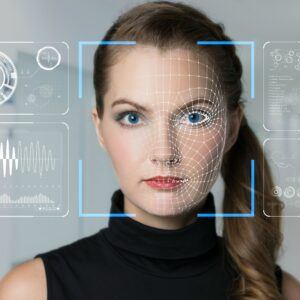Facial Recognition Next in Line to Improve Commerce

Paying for goods via facial technology used to be something only seen in the movies, but now it is becoming a reality as the technology around identity verification grows. In fact, some iPhone users may already be using this method of identification. Apple’s Face ID lets users securely unlock their devices, authenticate purchases, sign into apps, and more — all with just a glance.
This technology is not only being used by consumers for basic identification, but now facial technology is moving into the payments environment to increase security and convenience for consumers.
How Does Facial Recognition Work?
Facial recognition uses mathematical algorithms to capture, extract, compare, and match a face to a person’s identity. Physical samples are collected through a scan and then the data is extracted for comparison purposes. Identity matches are then based on an existing image stored in a facial database. The entire process only takes a few seconds due to artificial intelligence.
Chinese consumers are already using facial recognition in popular apps like Alipay, which uses a person’s face as their credentials to transfer and receive money. Since 2017, customers of KFC in China have been able to use facial recognition to buy their food. Now, China is testing the use of facial recognition for subway payments where a person’s face is linked to a payment account to gain entry onto a subway.
The Chinese aren’t the only ones entering the age of facial recognition. United States’ companies are showing interest and beginning to test facial recognition technology as well. CaliBurger in California, for example, allows customers to pay for their food through facial recognition.
What are the Pros and Cons of Using Facial Recognition for Payments?
Pros
- Greater security levels through biometric identity
- Easy integration into an existing payment system
- 99% accuracy
- Greater efficiency and reduced friction due to full automation
- Improved customer experiences through collection of data on customers’ habits and preferences
Cons
- Data must be stored, protected, monitored, and managed
- Image size and quality are still evolving
- Customers must know what angle to stand at for scanning purposes
- Issues can arise with color contacts, glasses, and facial hair
Facial recognition technology will bring much needed security to the payments industry, but the technology is still evolving, and it will take some time before it is more widely adopted across the United States.
Learn More About Facial Recognition in Payments:
Contact us online or call 1-800-621-8931.
Subscribe to Card Talk
Our monthly newsletter delivers the latest payments news straight to your inbox


